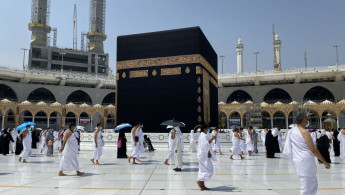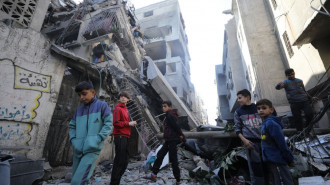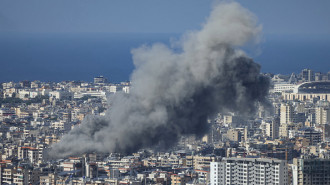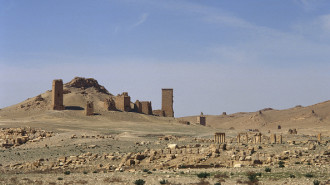Umrah pilgrims flock to Kaaba as Saudi Arabia removes barriers
The barriers placed around the Kaaba during the Covid-19 pandemic were taken away by Saudi authorities on Tuesday.
The move came as Muslim faithful flocked to Mecca to perform Umrah, the minor optional pilgrimage that can be performed at any time of the year, following Hajj season.
Saudi Arabia's King Salman bin Abdulaziz gave his "generous approval" to "lift the protective barriers around the Kaaba, coinciding with the start of Umrah season", said Abdul-Rahman Al-Sudais, general president of the affairs of Islam's Two Holiest Mosques, according to news website Arabi 21.
Mecca's Great Mosque, where the cube-shaped Kaaba building is located, is considered the most sacred mosque in Islam. The Prophet's Mosque in Medina is the second most holy site.
جموع الطائفين بالقرب من الكعبة المشرفة. #المسجد_الحرام #رئاسة_شؤون_الحرمين pic.twitter.com/eT0RdzNdfy
— رئاسة شؤون الحرمين (@ReasahAlharmain) August 2, 2022
Saudi authorities placed barriers at the Kaaba, which is believed to have been built by the Prophet Abraham, to help curb the spread of Covid-19.
Pilgrims often seek to touch parts of the Kaaba, particularly the Black Stone in its eastern corner, which is commonly kissed.
Photographs posted to Twitter early on Wednesday by the presidency of the Two Holy Mosques, depicted worshippers touching the Kaaba.
Some Muslim pilgrims were shown touching the area just below the golden door to the Kaaba.
The removal of the barriers comes after the Kaaba's cover, known in Arabic as the Kiswah, was changed on 1 Muharram, the date of the Islamic New Year.
This is has never happened before in Saudi history, as the change has traditionally occurred on 9 Dhu Al-Hijjah, during the month in which Hajj takes place.




 Follow the Middle East's top stories in English at The New Arab on Google News
Follow the Middle East's top stories in English at The New Arab on Google News


